

The notion of judgment is as old as humanity. For example, the judgment of the soul in ancient Egypt is a trial where the deceased must appear to obtain eternal life. There are three different conceptions of this judicial confrontation.
In detail, the weighing of the heart shows the deceased and their spouse respectfully bowed before a scale. The heart of the deceased is placed on the left plate, balanced with an ostrich feather on the right plate, a symbol of rectitude and Maat. Anubis and Thoth oversee the proper conduct of the weighing and record the result. Behind, the monster Ammit, devourer of impure souls, waits. If the heart is judged light, the deceased is declared righteous and presented to Osiris, requesting the status of the blessed. This scene inspired representations of justice in ancient Greece and medieval Europe.
Maat, the embodiment of divine order, is the daughter of the god Ra. Her attribute, the ostrich feather, is used to weigh the souls of the dead. Maat presides over the cycles of the seasons and the stars, maintaining divine order and warding off social chaos. She is the guardian of morals and customs.
Symbol of truth and honesty: The feather of Maat, used in ancient Egypt to weigh souls, symbolizes truth and justice. It reminds us that our actions are constantly evaluated and that integrity is essential.
Later, in ancient Greece, we encounter Themis, the goddess of justice. The wife of Zeus, Themis is the mother of the seasons, law, and justice. She embodies divine law and social order, ensuring that traditional customs are respected. Themis is often depicted holding a scale, although some broken statues do not allow this attribute to be confirmed with certainty.
Roman justice is also personified by Justitia, an allegorical figure representing the moral strength of the legal system. Since the 13th century, the figure of Themis with blindfolded eyes symbolizes the impartiality of justice. Since the Renaissance, she is often depicted with a sword and scales, symbolizing both the power of justice and the fairness needed to resolve conflicts.
The attributes of justice are numerous, including the blindfold, sword, scales, book, and crown.
Covering the eyes of justice, it symbolizes impartiality. Justice must be rendered objectively, without fear or favor, regardless of the identity of the accused. Initially, this blindfold was an attribute of the Greek goddess Tyche and the Roman goddess Fortuna, representing fate and chance. It was secondarily attributed to Latin justice.
Impartiality and Rationality: The blindfold on the eyes of Justice suggests that judgments must be impartial, based solely on facts and not influenced by prejudice or personal interests.
Representing the repressive aspect of justice and the application of penalties, the sword also symbolizes the power of justice to resolve problems and disputes. Being judged can be painful, as determining what is right involves a final and enforceable decision. The sword is double-edged, exercising reason and justice in favor or to the detriment of each party.
Power and Authority: The sword symbolizes the authority of justice, capable of resolving conflicts and applying necessary penalties. It reminds us that justice has the power to enforce laws and maintain order.
Often depicted in the left hand of justice, the scales symbolize fairness and the judge's work, weighing each argument to reach a balanced decision. The scales are one of the oldest symbols of the function of judging, present in several ancient mythologies to weigh souls after death.
Symbol of Balance: The scales remind us of the importance of weighing pros and cons, making balanced and just decisions. It is a call to measure and moderation in all actions.
Other attributes can be associated with justice, such as the book of law texts, the crown symbolizing justice as the queen of virtues, the dog representing fidelity to virtue, and the serpent reminding us of the need to avoid vice. Divine justice can be represented by a beautiful lady wearing a crown with the dove of the Holy Spirit, looking towards the sky, dressed in a golden robe and holding a sword and scales.
The Justice card embodies universal concepts of truth, fairness, and balance. Its symbolism is deeply rooted in ancient traditions and reminds us of the importance of integrity and impartiality in our lives. Whether in ancient Egypt with Maat or in ancient Greece and Rome with Themis and Justitia, justice remains an essential pillar of any society.
To illustrate the idea that justice in tarot was initially perceived as divine rather than human, we can examine the Justice card from the Visconti-Sforza deck, created around 1450. This card has a unique feature: in addition to the traditional allegory of Justice - a beautiful lady holding a sword and scales - it shows a character on a white horse brandishing a sword in the sky.
This rider can be interpreted as a reference to the angel Saint Michael, known to be the defender of divine justice. Another possible interpretation is that it is an allusion to the Book of Revelations in the Bible, particularly chapter 19, verse 11, which describes a heavenly rider carrying a sword.
It is important to remember that in medieval society, knights were often seen as embodiments of justice. Beyond their role as warlords, they were also territorial lords, responsible for enforcing justice in the domains under their guard and protection. Thus, they were not only military figures but also guardians of law and fairness in their lordships.
The Justice card from the Visconti-Sforza deck offers insight into the evolution of the representation of justice in tarot. The inclusion of a rider highlights the transition between justice perceived as divine and justice as more human. This duality reflects the values of the medieval era where the divine and the earthly were closely intertwined.
The Justice card, in the history of tarot, has sometimes been confused with or differentiated from the Last Judgment card. At the end of the 15th century, the Justice card was numbered 20 (XX in Roman numerals), placing it between the Judgment card and the World card. This order is observable in the Budapest tarot deck.
The angel on the Judgment card calls souls to rise from their graves for the final judgment, a scene reminiscent of the judgment of the soul in ancient Egypt. In popular Christianity (though not in the Bible), it is said that Saint Michael awaits newly resurrected souls with his sword and armor to decide their fate: those who will go to heaven, those who will be handed over to the devil, and those who will wait for the final judgment in purgatory.
The image of Saint Michael in armor with a sword is common in 15th-century art, at the end of the Middle Ages and the beginning of the Renaissance. The creator of the Budapest tarot may have seen Saint Michael as an incarnation of Justice in the act of final judgment. This suggests that, in the original series of Triumphs, Justice was primarily perceived as divine justice rather than human justice, a perception that would evolve later in the Tarot of Marseille. However, this can be debated as the scales in the Budapest Justice card are indeed tilted. Is the 20th position of Justice truly meant to evoke divine justice, or is it simply somewhat random in order? For a long time, the order of the Triumphs was not fixed (nor their number, as seen with Minchiate), and several orders existed according to Italian cities, such as Florence, Bologna, or Milan. Thierry Depaulis and Michael Dummett tend to think (without established proof) that the order of the 22 Triumphs of the Tarot of Marseille comes from that of Milan.
When the tarot was adopted by French card makers, the perception of justice evolved, incorporating details that radically change our understanding of this card. In the Tarot of Marseille, the Justice card presents distinctive features that reflect this new interpretation.
Firstly, we notice that the scales held by Justice are not perfectly balanced. While this detail appears only anecdotally on the Budapest Sheet in Italian productions, in France, all Type I tarots include this choice: The elbow of the hand holding the scales presses on the beam, tilting the balance. This detail suggests that justice is no longer completely impartial; it is influenced by human interests, thus becoming partial justice. This marks a clear transition from divine justice to human justice.
Another notable element is the necklace worn by Justice. This necklace, which seems to be an extension of her hair, can resemble a rope wrapped around her neck. The rope-like necklace can symbolize the weight of judicial decisions and the responsibility that comes with administering justice. This representation reinforces the idea that justice is a complex domain often burdened with heavy consequences for those who bear the charge. However, this ambiguous image can also portray Justice as a victim of her own decisions and judgments, highlighting the complexities and contradictions inherent in the judicial system.
The crown of Justice, adorned with a diadem, symbolizes her intellectual function and remarkable cognitive abilities. This suggests that justice requires great intelligence and deep reflection to be applied correctly.
Finally, the veils or drapes behind the figure of Justice in the Type I Tarot of Marseille seem to form wings. However, it is important to note that in the Tarot of Marseille, there are only four angels (The Lover, Temperance, The Devil, Judgment) and Justice is not one of them. These veils can also remind us of the veil of the High Priestess, signifying that Justice, like the High Priestess, reveals the truth and unveils what is hidden. The parallel with the High Priestess and her veil indicates that justice involves the revelation of truth, requiring a methodical and enlightened approach.
In the Type II Tarot of Marseille, the representation of Justice evolves again. The scales become balanced again, and the veil behind her takes the form of a throne or a high-backed chair, indicating stability and regained impartiality.
The master artisans of the Tarot of Marseille were influenced by the artistic traditions of their time. The classic motifs of justice, as seen in sculptures and paintings, provided a clear model for the card's iconography. The use of the scales, the sword, and the seated figure are direct borrowings from these artistic traditions, ensuring that the card's symbolism would be immediately recognizable and resonate with notions of fairness and moral rectitude.
Abroad, it should be noted that the veil or drapes behind Justice have inspired Italian or Belgian master cardmakers to the point that they transformed these drapes into wings. Justice was thus transformed into an angel as can be seen in the Carlo Della Rocca tarot of 1835 or the Strambo tarot of the late 19th century.
The interpretation of the Justice card evolved with the influence of various French occultists. Oswald Wirth, a famous occultist, gave the card a severe dimension by emphasizing the sharp points of the crown and the sword. According to Wirth, these elements represent the necessary rigor of justice to restore social balance through punishment. This can be enriched by the idea that justice is not only punitive but also preventive, seeking to deter unjust behaviors and promote a harmonious society.
The scales represent the inevitable highs and lows of life, reminding us that fluctuations between good and bad times are constant. From this perspective, justice is seen as a regulating force essential for maintaining order and balance within society. This idea could be complemented by the notion that justice aims to balance these opposing forces, offering a more nuanced and integrative perspective of social order.
Occultists also emphasize values such as moral conduct, piety, social agreement, and good administration. An orderly society is compared to a well-managed household, led by a competent housewife who organizes chaos, puts things in order, and distributes goods rationally and measuredly. This analogy illustrates the importance of organization and fairness for the proper functioning of society. The comparison of justice to a competent housewife organizing chaos and setting things in order can be enriched by a discussion on the role of justice in managing conflicts and social disorder. Justice, as an institution, plays a crucial role in mediating disputes and distributing resources fairly.
Arthur Edward Waite, another influential occultist, shared this vision of justice as a pillar of a well-organized society where all components work harmoniously together. The Justice card, drawn by Pamela Colman Smith for the Rider-Waite Tarot, reflects this conception. Justice is depicted sitting in front of a curtain draped between two pillars, a structure similar to that of the High Priestess card.
Waite emphasizes that although the two cards share a similar design, the curtains open onto completely different worlds. The High Priestess reveals spiritual and hidden mysteries, while Justice exposes the tangible realities of morality and social order. Justice reveals tangible truths and moral realities, while the High Priestess unveils spiritual mysteries. This enriches our understanding of justice as a force of revelation and clarification in the material world.
The Justice card in the Judges Tarot features a young woman balancing on a tightrope, attempting to cross the sky. On this card, one scale holds a heart, while the other carries an ostrich feather, a symbol directly inspired by the goddess Ma'at, representing truth and justice. This image immediately evokes the judgment of the soul, reminiscent of the heart-weighing scene in the Egyptian Book of the Dead, where the deceased's heart is weighed against Ma'at's feather to determine the purity of the soul. Here, the card emphasizes that Justice may not only involve making a decision but also evaluating the sins, errors, and faults committed.
The difficulty of this evaluation is highlighted by the fact that the young woman does not hold the scales in her hands but literally in her mouth. This suggests the complexity of maintaining a just and balanced position. Her hands remain spread out on either side of her body, as if trying to balance her position with them.
Another intriguing element is the blindfold she wears, which only covers one eye, like a pirate. This might indicate a particular clarity in her judgment, with the one open eye allowing her to see and move forward. This could be interpreted as an allusion to the imperfect nature of human justice, contrasting with the ideal of divine justice, which is perfect and infallible.
This open eye also raises the question of whether Justice necessarily has a destination or if it must simply move forward. Justice, in this context, seems to be a precarious balance where the slightest error could lead to a fatal fall, symbolized by the tightrope walker advancing in the middle of the sky.
The image of the young woman balancing suggests that Justice is a delicate matter requiring extreme precision. This metaphor can be enriched by adding that Justice must constantly adjust its balance in the face of new information and changing circumstances, making it a dynamic process rather than a static one.
In the Wizards Tarot, the Justice card presents an interesting variation. Instead of the image of a tightrope walker, we see a young woman sitting at a table. This representation evokes less the idea of a figure of justice and more that of an accountant or moneylender. Additionally, next to the scales, there are scrolls and a quill, suggesting contracts to be read or signed. The portrayal of Justice as an accountant or moneylender in the Wizards Tarot could be seen as a critique or reflection on the nature of modern justice. This idea can be enriched by discussing how justice, in some societies, may be influenced by economic and financial considerations.
The presence of scrolls and quills suggesting contracts can be interpreted as a metaphor for the commitments and responsibilities in justice. This idea can be enriched by talking about the importance of honesty and integrity in legal and financial matters.
A notable addition on this card is the presence of an owl. The symbolism of the owl, much like that of the owl, is associated with wisdom, mystery, intelligence, and protection. In the context of this card, the owl likely symbolizes intuition, knowledge, and clairvoyance. This suggests that justice has clairvoyant abilities, allowing it to see beyond appearances and anticipate problems. This symbolism can be deepened by exploring how intuition and clairvoyance play a role in fair and balanced decisions, and how they complement logic and rationality.
The windows behind the young woman remind me of those from the Renaissance, evoking the bourgeoisie of that era. This reinforces the idea that this figure represents more a young bourgeoisie keeping her business accounts than a magician or an allegory of justice. The Renaissance-style windows and the evocation of the bourgeoisie add a historical layer to the card, allowing for a discussion on the evolution of justice through different eras and how historical and cultural contexts influence our perception of justice. However, it is important to note that my perception of this card is probably far from matching the original intention of the tarot creator! ^_^
In the Witches' Wisdom Tarot, the Justice card features a young woman wearing a white blindfold that only covers one eye, leaving the other open. This peculiarity symbolizes partial vision, but this time, the open eye is not used to advance on a tightrope, as in the Judges Tarot, but to focus on the book of law she holds on her lap. This suggests that justice watches over the laws it must apply.
The idea that justice has one eye open on the book of law reinforces the importance of applying laws in the justice process. This notion can be enriched by discussing the importance of balancing the knowledge of laws and their practical application. Justice should not only be a rigid interpretation of laws but also an application that takes into account the unique circumstances of each situation.
The emphasis on the book of law highlights the importance of legality and structure in justice systems. However, this focus can also be seen as a potential critique of rigid justice that leaves no room for flexibility and empathy. This point can be enriched by discussing the importance of humanity in the application of the law and how overly rigid justice can sometimes lack compassion.
The scales here are occupied by a white cat and a black cat. This representation refers to the original sense of the scales, weighing the pros and cons, and balancing opposing forces to judge a situation fairly. The cats, perhaps symbolizing the opposing forces of good and evil or positive and negative aspects, seem ready to confront each other, illustrating the tensions and oppositions inherent in any justice decision.
The cats can be seen as symbols of the dualities present in any situation: good versus evil, positive versus negative. This interpretation can be deepened by exploring how justice must constantly balance these opposing forces to reach a fair decision. The importance of duality and complementarity in judicial decisions can also be discussed.
In the True Heart Tarot, the Justice card offers a unique depiction of the balance scales, which contain the sun and the moon. This symbolism evokes not opposing and irreconcilable forces, but complementary elements. For the sun and the moon follow each other in their course across the sky, illustrating perfect harmony and balance. It is an interesting approach to consider for resolving conflicts and moral dilemmas. This idea could be further explored by examining how this perspective could be applied in restorative or community justice contexts. The image of the perfectly balanced scales, with the sun and the moon, can also symbolize the need for balance and empathy in justice. Balanced justice considers not only the facts but also the specific contexts and circumstances of each situation.
This interpretation moves us away from a black-and-white view of justice, where it is about weighing good against evil. Instead, it invites us to see the forces at play as complementary, coexisting in balance, rather than as irreconcilable antagonists. This offers a more nuanced and enriching perspective for addressing problems or deadlock situations. By recognizing the forces as compatible and likely to harmonize, one can find balanced and constructive solutions.
The fact that the young woman’s feet are placed on a sword brings to mind the phrase "walking a tightrope," and evokes the difficult and perilous nature of rendering justice. This image reinforces the idea that justice is a delicate exercise, requiring great precision and constant balance. One could discuss the importance of caution and reflection in judicial decisions, as well as the inherent risks of applying laws too rigidly or too leniently.
The Justice card in the Light Seer's Tarot may seem quite conventional at first glance, with a woman holding a sword or saber that serves as the scale's balance beam, from which two cups hang. However, this card stands out for its perfect vertical symmetry, symbolizing balance, an essential principle of justice.
On closer inspection, one also observes horizontal symmetry. Below the woman’s face, which has closed eyes, is her inverted reflection with open eyes, but in a darker atmosphere. This duality shows a bright side where the woman may refuse to see certain truths and a dark side where she accepts seeing the negative aspects and the darkness of things.
The woman with closed eyes in the light and open eyes in the darkness highlights a profound idea: justice is not just about seeing what is obvious but also about recognizing what is hidden or uncomfortable. This notion is essential in divination and personal development, where self-understanding involves acknowledging one’s own shadows and lights.
The symmetry in the Justice card of the Light Seer's Tarot, with its bright and dark aspects, recalls the concept of duality inherent in justice. Justice must not only be impartial but also able to recognize and balance opposing forces. This ties into the esoteric tradition where Justice is seen as a principle of universal balance, harmonizing good and evil, day and night.
The position of the sword is also notable: the woman holds it just below her chin, as if she were ready to be beheaded. This recalls the hair rope around the neck of Justice in the Marseille Tarot, once again highlighting the perilous nature of justice. This symbol shows that one can easily be hurt by the justice of others or in seeking to deliver justice oneself.
Indeed, the card prompts me to question whether one should seek justice for oneself or let justice be administered by established institutions. This raises reflections on the legitimacy of personal justice versus institutional justice. One could explore the limits and dangers of personal justice, as well as the importance of balanced and just judicial systems to maintain social order.

Key words for the 78 cards for the Tarot of Marseille and the Rider-Waite-Smith, to slip into your favorite deck. Your leaflets always with you, at hand, to guide you in your readings. Thanks to them, your interpretations gain in richness and subtlety.
The Justice card is not limited to balance and judgment. This idea may seem provocative, but it must be understood in the context of the Fool’s journey. Justice should be considered when placed in the context of the Fool's journey, between the Lovers, the Chariot, and the Hermit cards. To fully understand the function of Justice, one must examine the cards that precede it (the Lovers and the Chariot) and the one that follows it (the Hermit).
Justice in the Fool's journey speaks to us of the law of cause and effect, rather than an impartial judgment rendered by an external authority. It symbolizes the karmic principle that we reap what we sow. It is not an arbitrary decision made by a person or an administration, but a natural result of our actions.
Saying that Justice means reaping what one has sown may seem similar to the idea of judgment, but there is an important nuance. The consequences of our actions are not determined by an external force, but by the very nature of our choices and actions. Justice reminds us that decisions made by interest, rather than by the heart, often lead to disappointments and disillusions.
In the older versions of the Marseille Tarot, such as those of Jean Noblet and Jean Dodal, Justice is often depicted with drapes or a veil behind her, similar to those of the High Priestess. This veil symbolizes the revelation of truth, showing that Justice exposes the truth of human nature.
| Symbolic interpretation | Right direction (Positive) | Legality, conscience, morality, order, trial, judgment, reparation | Reverse direction (Negative) | Injustice, condemnation, rigidity, illegality, disorder, imbalance, disappointment, disenchantment, neglect |
| Psychological interpretation | Right direction (Positive) | Integrity, honesty, impartiality, loyalty, fairness, equity, justice, lucidity, order | Reverse direction (Negative) | Dishonesty, irresponsibility, lying, arbitrariness, partiality, insensitivity |
| Advice | |
| Receive according to your past actions. Start by settling or repairing what needs to be. Speak with moderation and act with parsimony. Finally, make a fair decision. | |
| Thematic Interpretation | Love | Balanced love. Honest and loyal relationship. Official regularization. Breakup due to infidelity. Unfulfilled expectations. | Work | Employment contract. Mediation or case before an employment tribunal. Legal profession. Dispute with the administration. | Money | Financial statement. Results in line with events. Bankruptcy. Fair (or unfair) compensation. Debt repayment | Family / Friendships | Legal proceedings (adoption, marriage, succession). Balanced or peaceful relationship (but may be cold). Settling scores | Health | Health check-up. Consequences of excesses. Seeking a more sober and balanced lifestyle |
| Divination / Prediction | Who ? | A judge. An arbitrator. A mediator. An experienced person. A dishonest individual | Where ? | A court. An administration. An assembly. A marketplace. One's home | When ? | A trial. A board or executive committee meeting. A confrontation with a partner or loved one | How ? | By seeking justice. By remaining objective. By weighing the pros and cons. By admitting one's faults. By seeking the right answer or remedy. |
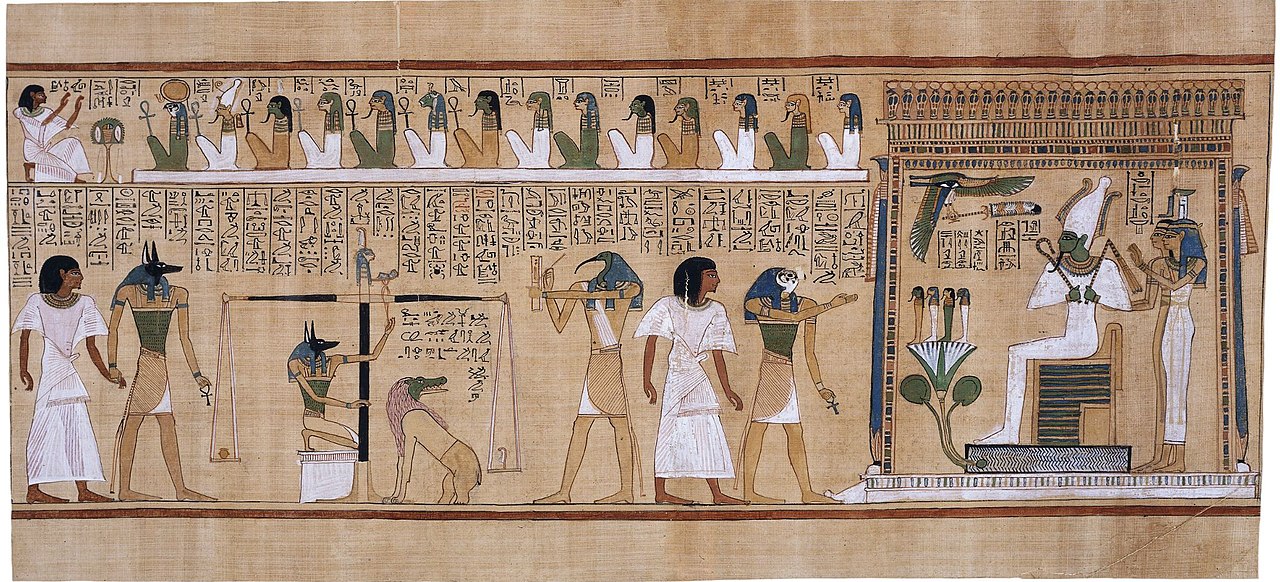
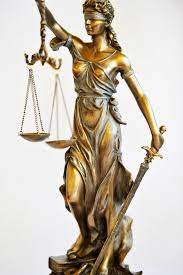


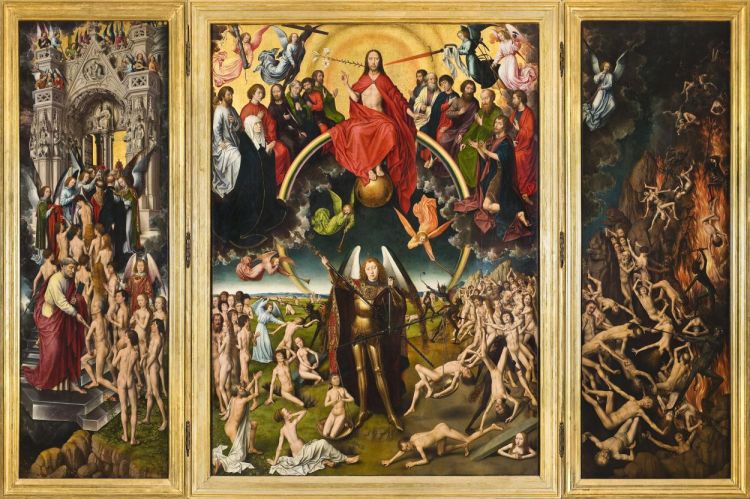
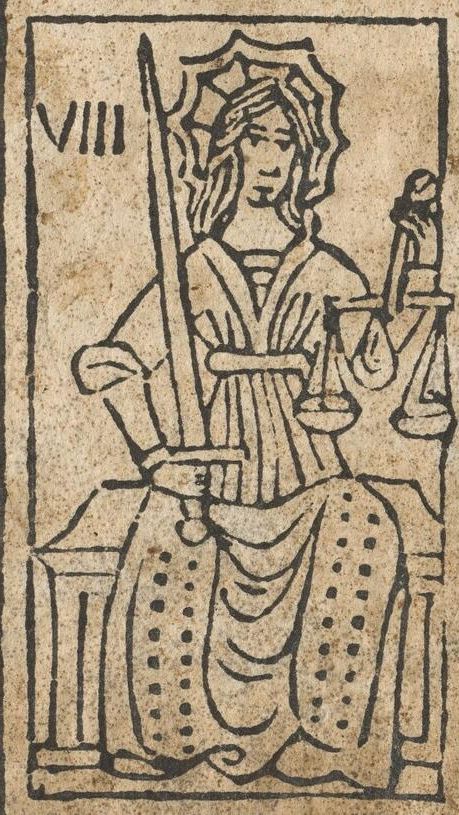
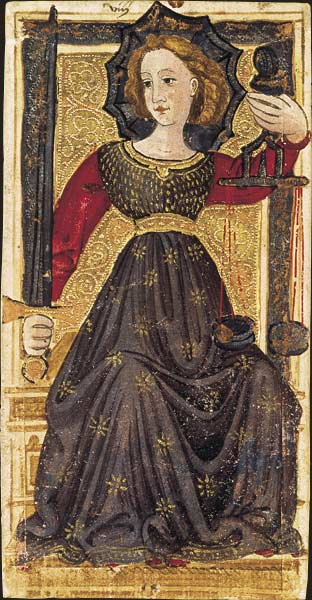
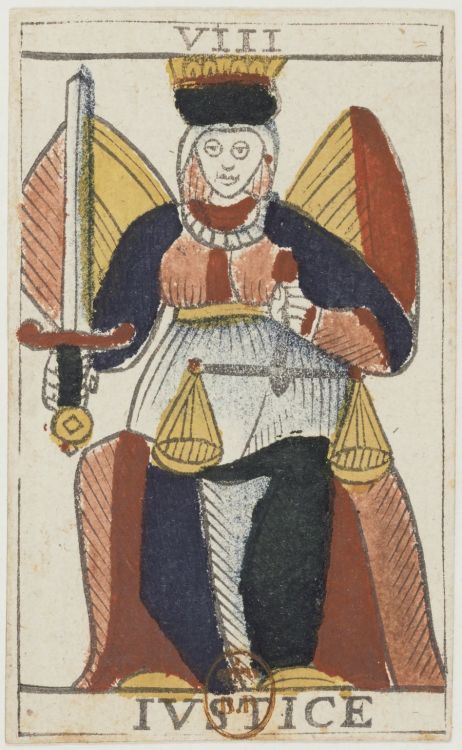



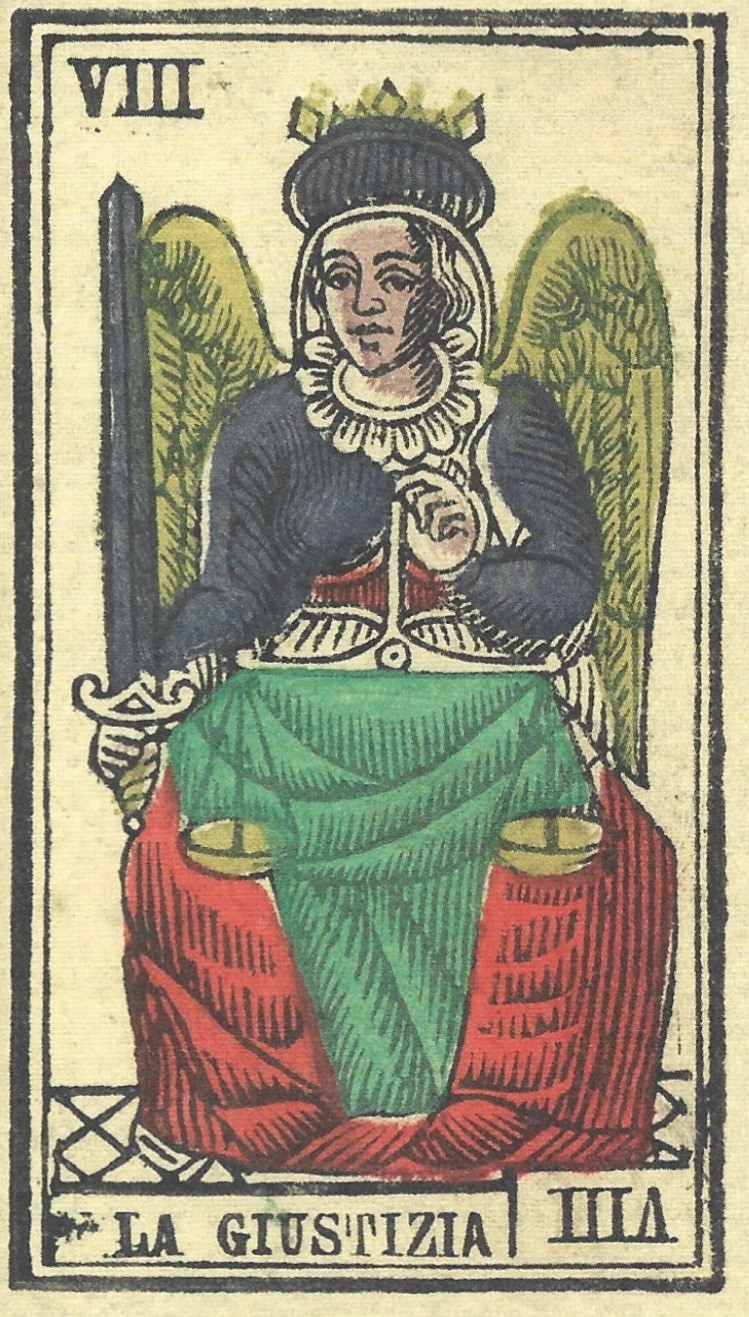


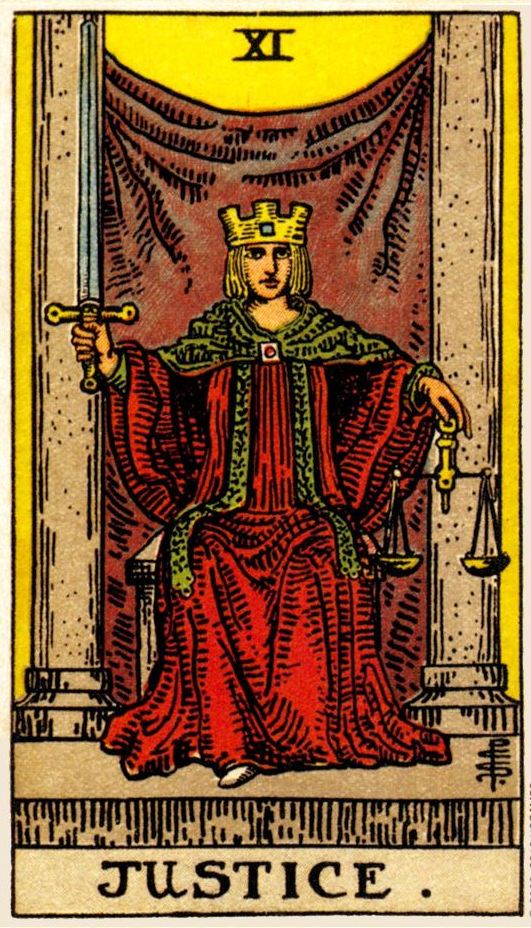

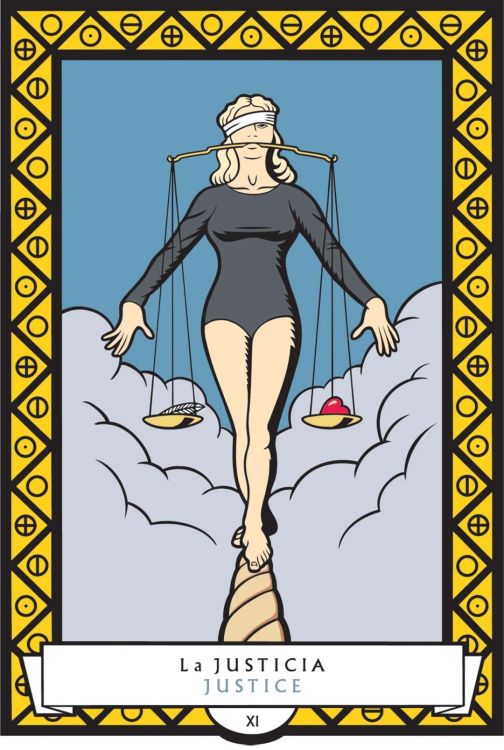
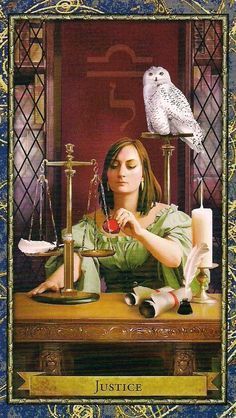
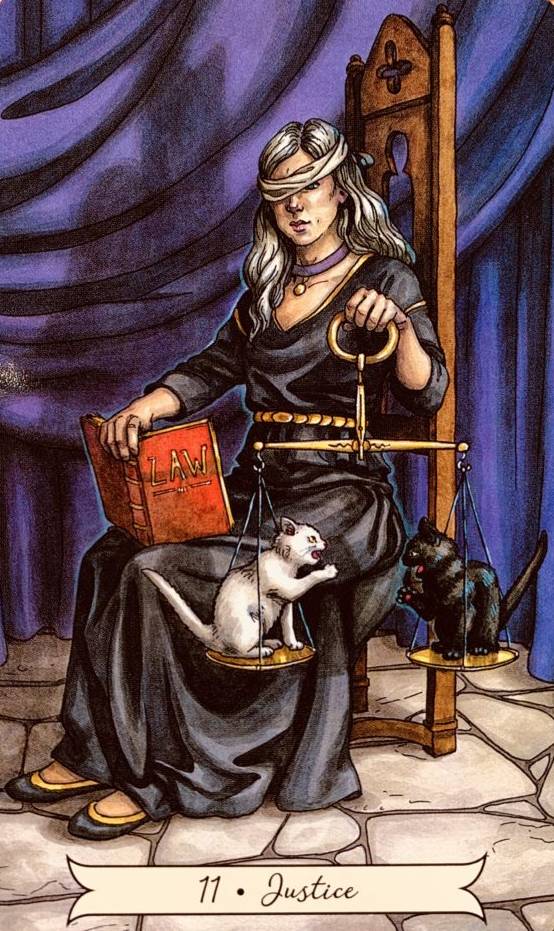


Copyright © TarotQuest.fr